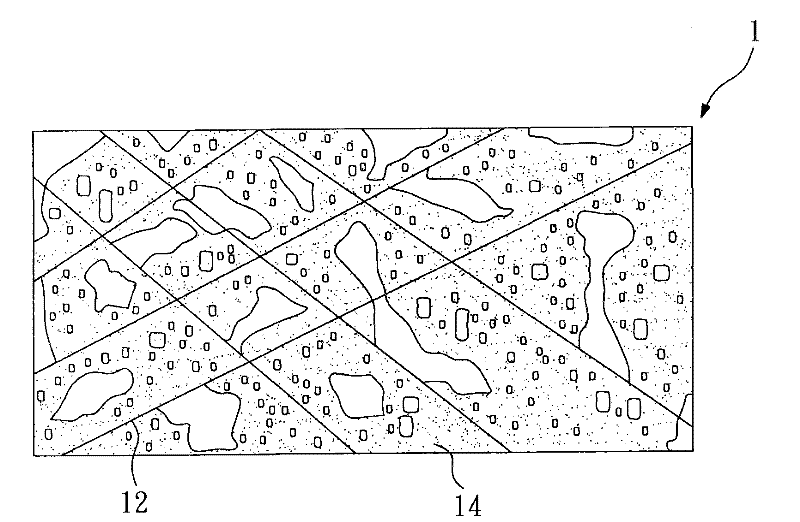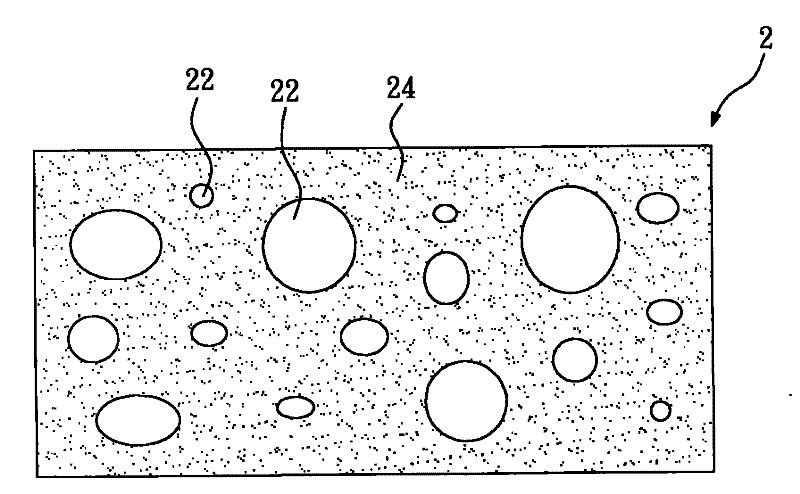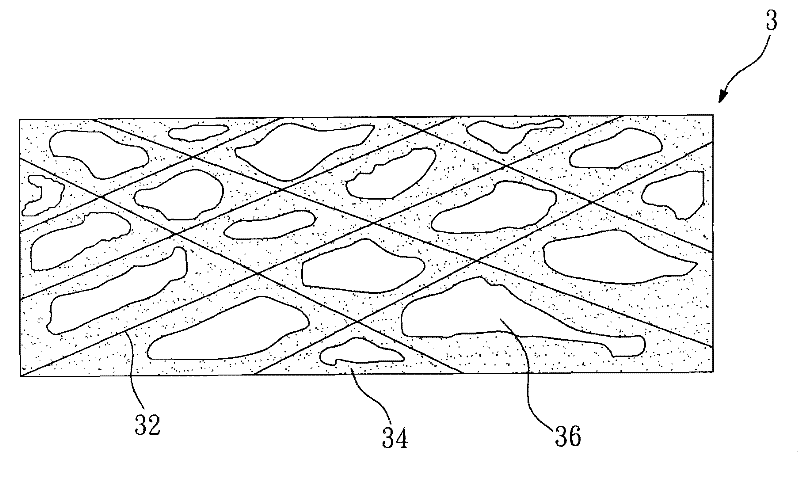Polishing pad and method of manufacturing the same
A polishing pad and polymer elastomer technology, applied in the manufacture of tools, abrasives, metal processing equipment, etc., can solve the problems of difficult control, inconsistent size and distribution, and difficult to uniform concentration distribution, and achieve good stability and reproducibility. , the effect of high planarization efficiency and excellent surface quality
- Summary
- Abstract
- Description
- Claims
- Application Information
AI Technical Summary
Problems solved by technology
Method used
Image
Examples
Embodiment 1
[0038] First, a composite fiber (70% by weight of nylon and 30% by weight of polyethylene terephthalate (PET)) (Sanyo Chemical Industry Co., Ltd.) having a fineness of 3 deniers was bundled into a fiber base material. The fibrous base material is a non-woven fabric (that is, a non-woven base cloth), the thickness of the non-woven fabric is 2.25mm, and the density is 0.22g / cm 3 And the weight is 496g / m 2 .
[0039] Next, the nonwoven fabric is placed in the first polymer elastomer resin solution, and the nonwoven fabric is repeatedly pressed using a device (Sanfang Chemical Industry Co., Ltd.) that can cause a pressure difference, so that the first high The molecular elastomer resin solution penetrates into the nonwoven fabric due to different pressure differences. This first polymer elastomer resin solution is made up of polyamide resin (the first polymer elastomer resin, molecular weight is 260000), solvent dimethylformamide (DMF) and interfacial agent (dispersion agent (di...
PUM
 Login to View More
Login to View More Abstract
Description
Claims
Application Information
 Login to View More
Login to View More - R&D
- Intellectual Property
- Life Sciences
- Materials
- Tech Scout
- Unparalleled Data Quality
- Higher Quality Content
- 60% Fewer Hallucinations
Browse by: Latest US Patents, China's latest patents, Technical Efficacy Thesaurus, Application Domain, Technology Topic, Popular Technical Reports.
© 2025 PatSnap. All rights reserved.Legal|Privacy policy|Modern Slavery Act Transparency Statement|Sitemap|About US| Contact US: help@patsnap.com



